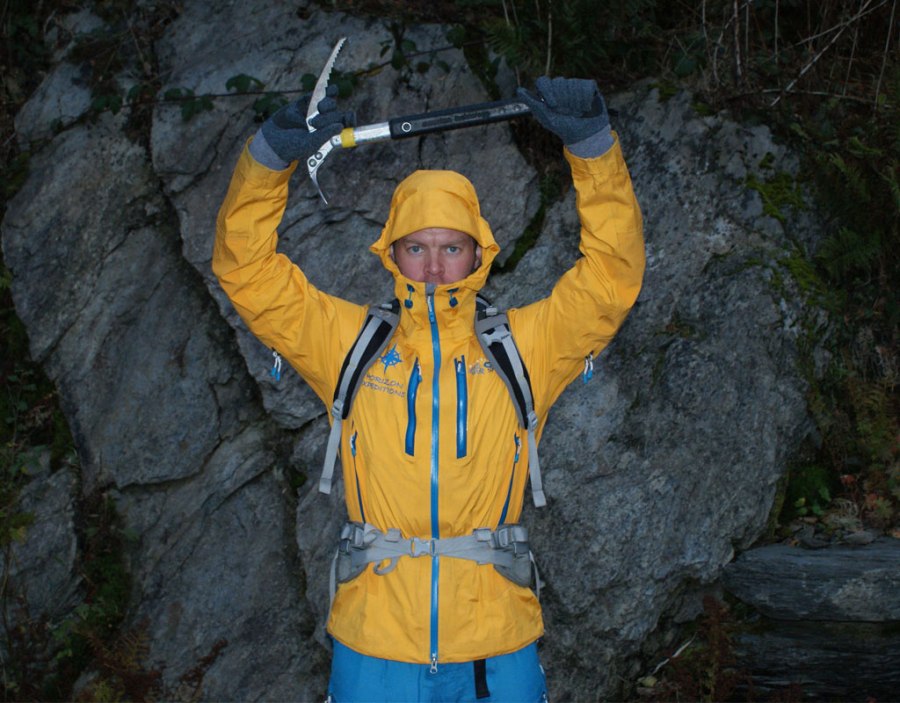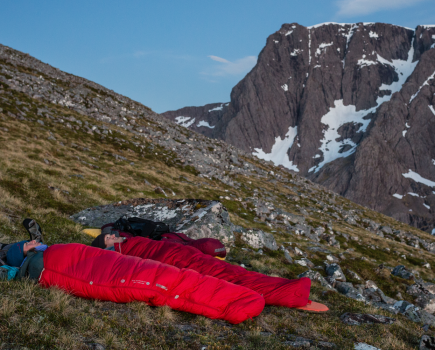All you need to know about choosing and using an ice axe
How to choose an ice axe
The ice axe is probably the most useful and important tool in our winter arsenal. There are essentially three types of ice axe: walking axe, mountaineering axe and technical climbing axe. The first two are most useful for the hillwalker.
Walking axe
Predominately used as a walking stick,to arrest in the event of a fall and to occasionally cut steps. Walking axes are usually between 60 and 75cm long and are very light. Examples include the Black Diamond Raven, Grivel Munro and DMM Cirque.
Mountaineering axe
This is the most versatile type of axe, and can be used for walking, climbing and as a belay anchor in conjunction with a rope. These are usually shorter than a walking axe, generally between 50 and 65 cm in length. They have a stronger shaft than a walking axe, and are generally heavier in the head, which makes cutting steps more efficient. Examples Include Grivel Air Tech Evo, DMM Raptor and Black Diamond Venom.
How to hold an ice axe
There are lots of different ways to hold an ice axe. Here I will describe the “British” method, and the one that I find most effective. Regardless of how you carry it, however, there are few hard and fast rules:
• Don’t trip over it!
• ALWAYS hold your ice axe in the uphill hand.
• Be decisive with it. If you are planting it in the snow, then plant it firmly. Don’t just set it on the snow/ ice, or drag it along. Hold the ice axe by the head, with the pick facing to the rear. How you hold the head is less important than holding it tightly, and making sure it is comfortable to hold in that way for long periods of time.
How to stow an ice axe
To be honest, most “ice axe attachments” on the back of rucksacks are not that well suited to carrying long walking axes. Many ensure that the point of your ice axe is protruding from your bag at about eye level from the person behind you! It is much better to slide your axe down the compression straps on the side of your pack. Another option is to keep it between you and your rucksack, under one of the shoulder straps, as illustrated. This also means its easier to hand.
Cutting steps
When the snow is too steep and too hard to safely move on it, we normally put on crampons. However, there are times when this may not be the best option, such as when crossing a small section of hard snow, it would be time consuming to put on our crampons for a few steps, to then remove them in order to carry on. These techniques are also important “get you home” tools if you were to break or lose a crampon. Cutting steps can also be useful with crampons.
Cutting principles
• To cut a step, we hold the axe at the bottom of the shaft, swinging from the shoulder, using the adze to cut the step.
• From the first blow of the adze, continue to cut into the same hole, enlarging it. This is best done with the first cut nearest you, getting subsequently further away.
Types of step
There are lots of ways to cut steps with an ice axe. Here, I will describe the types that I find most useful.
Slash steps
The quickest and most efficient step to cut. Can be used in direct ascent or descent, or diagonally. Face across the slope with the axe in the uphill hand. Swing the axe, like a pendulum, from the shoulder with the arm slightly bent. The step is cut on the lowest part of the swing. Make sure the step is big enough for your boot. In soft snow, you may be able to achieve this with one swing. More commonly, it takes a few. NOTE: The step must be cut on the horizontal plane, to ensure that you do not just slide off it!
Bucket steps
These a large, semi-circular holes or ledges. They can vary in size depending on how you want you use them, and could be just big enough for your boot, or larger steps that are large enough for you and your partner to stand in. They are positive and feel safe. Hold the axe with both hands. With the adze, make an initial hole. Enlarge this by cutting into it. Cut back into the slope to increase the depth, and to either side to increase the length.
Notes
Steps can only be cut in descent if the slope angle is low. When cutting steps downhill, slash steps are used. Ensure that you cut large steps, so as to ensure that when you step on it, you are in balance.
Final word
These skills are potentially very dangerous if performed poorly. There is no substitute for seeking qualified instruction in these techniques. Whatever your goals this winter, please be careful. Be very cautious when practising these skills and always look ahead to what will happen if you blow it.







